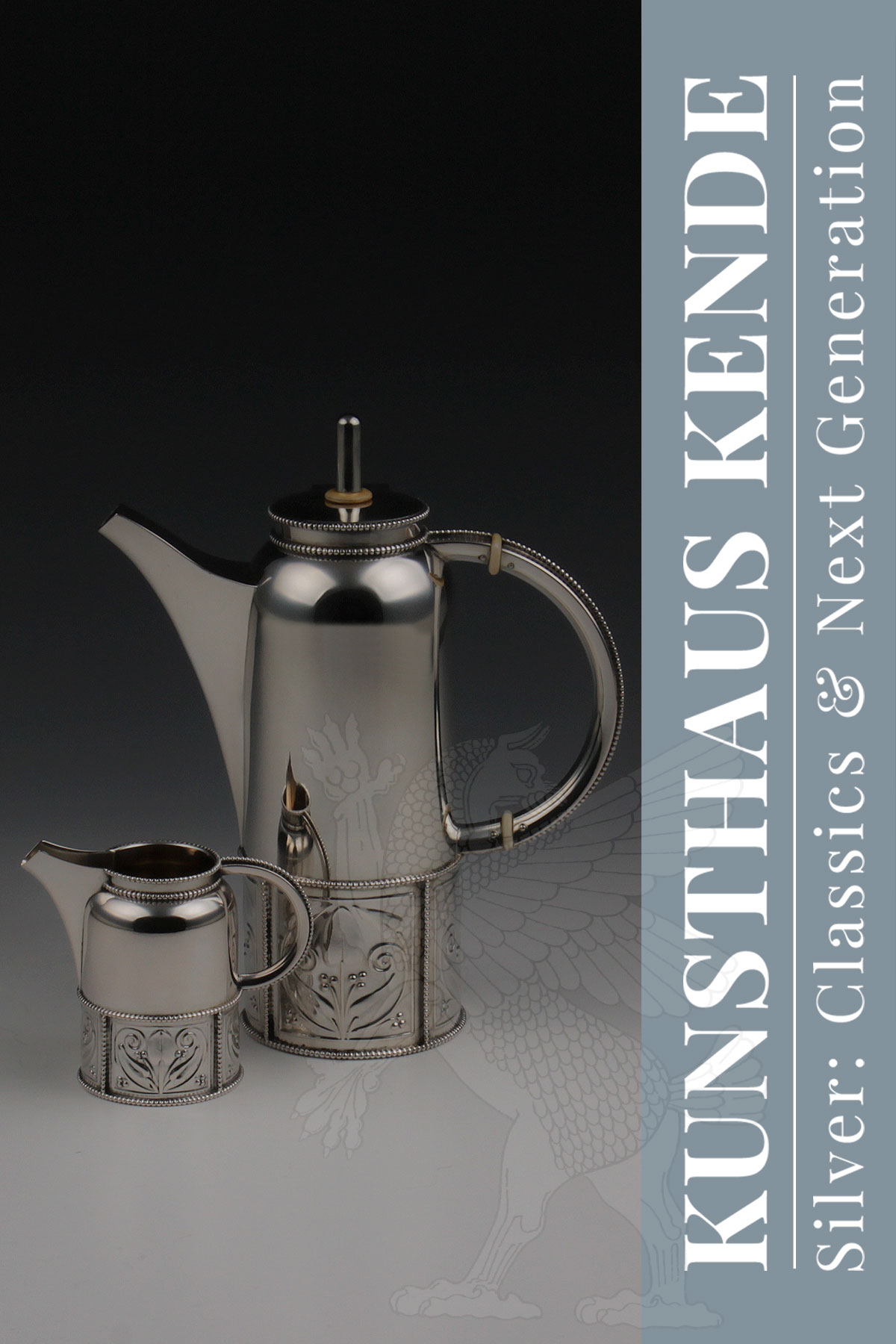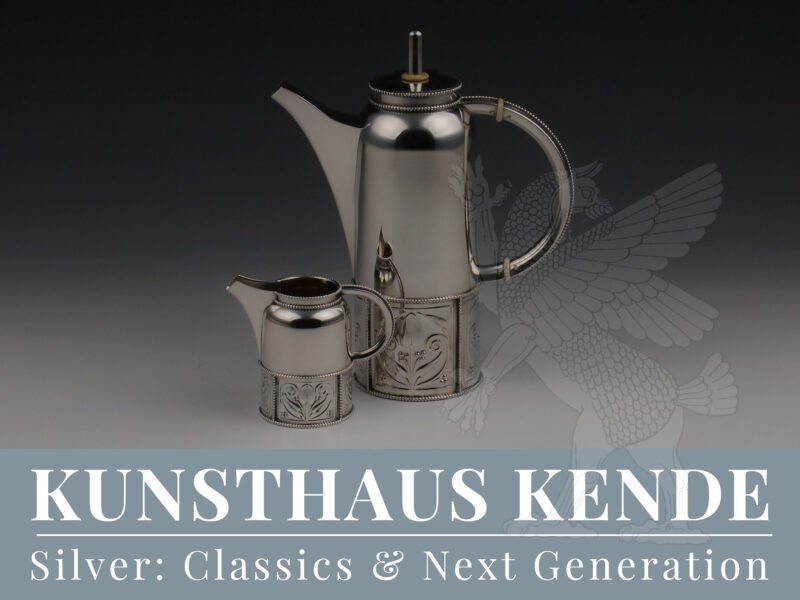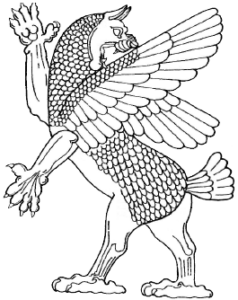Item number: 59068
A rare 800 grade silver coffee service, Vienna circa 1900,
designed by Hans Bolek, executed by Eduard Friedmann
The round wall tapering towards the shoulder and merging into the cylindrical neck, being subdivided by a double beaded rim. The top of the coffee pot with slightly domed lid, which is closed by a cylindrical knob. The handles are analogously adorned to the back with a central pearl frieze. The lower third of the body subdivided by pearl-rimmed fields decorated with plant ornaments in relief.
An unusual and beautifully shaped Viennese Art Nouveau coffee service in silver.
Coffe pot:
7.2 cm / 2.83″ diameter, 19.8 cm / 7.79″ tall (including knob); 369.7 g / 11.88 oz
Milk jug:
5.0 cm / 1.96″ diameter, 7.5 cm / 2.95″ tall (to the spout); 88.7 g / 2.85 oz
Due to great stylistic similarities to a centrepiece that is now in the possession of the Museum of Applied Arts (MAK) in Vienna – see here – which was designed by Hans Bolek and also made by the silverware factory Eduard Friedmann, it is almost certain that Hans Bolek was the author of this design. Likewise, a set of a toilet box and bottles executed by Hermann Südfeld, which was also designed by Hans Bolek (see here), shows clear stylistic analogies to our coffee service.
The Viennese Silverware Factory Eduard Friedmann
Founded in 1877, the Eduard Friedmann silverware factory received its trade licence in 1881. The increasing expansion of the company necessitated several relocations, the last of which was to Gumpendorferstrasse 130 in 1903, where it employed 36 workers in 1914. In the same year, the silverware factory was granted the privilege of using the imperial eagle in its shield and seal. Eduard Friedmann quickly achieved fame beyond the country’s borders with his artistically sophisticated designs and high-quality workmanship and the silverware factory exported its work to Germany, Russia, Spain and Italy, among other countries. In addition to Hans Bolek, Eduard Friedmann also executed designs by Otto Prutscher, Emanuel Josef Margold, Milla Weltmann and Alfred Pollak, which brought international attention to the company. The silverware factory also gained further notoriety through regular exhibitions of Austrian decorative arts at the Austrian Museum of Art and Industry (now the Museum of Applied Arts, MAK), as well as the Hunting Exhibition in Vienna (1910). In 1920, the Eduard Friedmann silverware factory was closed.





